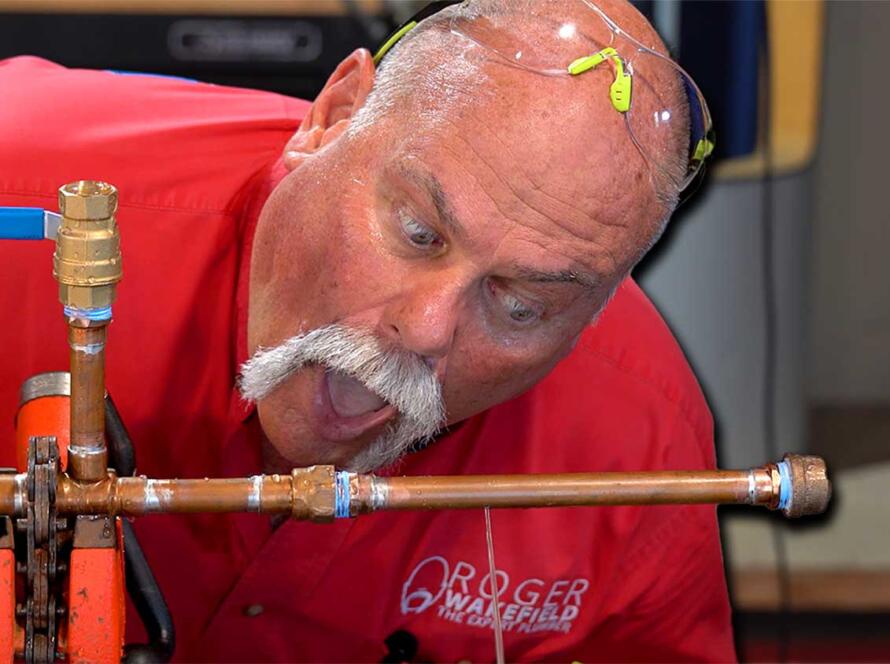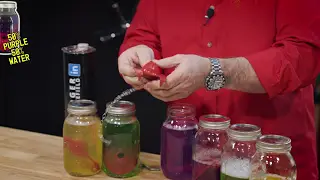From inexpensive insulation for short cold snaps to more robust measures like heat tape for extreme chills, you’ll learn how to safeguard your household water system—no matter where you live or how cold it gets.
Whether you’re in Texas, where sudden freezes catch homeowners off guard, or in a northern climate with predictable sub-zero conditions, these strategies apply. By the end, you’ll know how to wrap exposed pipes, handle frost-proof hose bibs, and even protect backyard pool filters from a cold snap. Let’s dive in.
1. Insulate Exposed Outdoor Piping
Why It Matters
Any piping visible outdoors—like the line coming from a well, pool equipment, or exterior hydrants—is at the highest risk. Even a slight drop below freezing can cause uninsulated pipes to freeze and rupture. A burst pipe might flood your yard or even saturate your slab with water.
Least Effective: Basic Fiberglass Wrap
- What It Is: A thin roll of insulation (often pink or white) that you wrap around the pipe multiple times.
- Pros: Cheap, easy to find, provides some R-factor.
- Cons: Minimal protection in severe cold—cold air often seeps through, especially if not applied uniformly.
- How To Apply: Start at the bottom, wind upwards, and keep tension on the roll. Overlap each layer to reduce air gaps. Tape the ends to prevent unraveling.
Better: Armaflex or Foam Sleeves
- What It Is: Neoprene or foam tubes, typically with a pre-slit side, that snugly wrap around pipes.
- Pros: Thicker insulation, can drastically reduce heat loss.
- Cons: Requires cutting for tight fits or odd pipe dimensions; seams might need special tape.
- How To Apply: Measure the pipe diameter to buy the correct size. Split the sleeve, wrap it, then secure seams with tape. Overlap any joints to prevent cold air infiltration.
Key Tip: Even the best insulation can fail in prolonged cold if you don’t seal seams properly. Tape or zip ties ensure no gaps.
2. Combine Insulation With Electrical Heat Tape
Why It’s the Best
If you live in a region prone to long freezes, adding electric heat tape under your insulation is a game-changer. Heat tape maintains a consistent warmth along the pipe’s length, preventing ice formation when temperatures plunge.
How It Works:
- Wrap or Straight-Line: Lay the heat tape along the bottom of the pipe (since heat rises) and secure it with heat-resistant tape.
- Follow Manufacturer Instructions: They’ll specify the max overlapping, safe PSI, or if the tape requires a built-in thermostat.
- Insulate Over It: Use fiberglass wrap or Armaflex on top to lock the warmth in.
- Remember to Plug It In: Heat tape won’t work if it’s not powered. Check your connections, especially if the outlet is outdoors—use a weather-resistant cover.
Best Uses:
- Long Exposed Runs: Where just insulation alone might fail in deep freezes.
- Valves and Fittings: Wrap around shutoffs or adapters, especially those expensive brass valves susceptible to freezing.
3. Shield Outdoor Faucets (Frost-Proof Hydrants)
Disconnect the Hose!
- Critical Step: If a frost-proof hydrant can’t drain because a hose is still attached, trapped water will freeze and crack inside the wall.
- What Happens: The pipe may burst unnoticed. Months later, you turn on that faucet in spring, and water leaks inside your home.
Methods to Cover Faucets
- Foam Cover (Styrofoam Dome)
- Easy: Slips over the faucet, secures with a rubber loop.
- Drawback: Doesn’t add much R-value, but it blocks cold wind and helps keep the spout warm enough to prevent freezing.
- Wrap With Towel, Then Plastic
- Why: A thick towel acts as the main insulation; plastic sheeting or a sturdy trash bag on top keeps moisture and wind out.
- Tip: Tape it tightly around the house to avoid gaps.
- Faucet-Sized Armaflex
- Advanced: Cut foam tubing to match the shape of the faucet. Then tape thoroughly.
- Pro: Good custom solution.
- Con: Time-intensive, and you’ll need extra tape and cuts for spouts or handles.
Always remove any hoses, splitters, or nozzles before insulating!
4. Protect Valve Boxes and Irrigation Backflow
Valve Box Insulation
Many homes have a green or black plastic box in the yard—inside are main shutoff valves or irrigation backflow devices. Cold air easily flows through the lid’s holes.
- Add a Blanket or Straw
- Method: Lay down an old moving blanket or insulation around the valves. Pack in straw or loose insulation.
- Why: You create a barrier that traps warmth and blocks the biting wind.
- Check for Drains
- If your box has a bleeder valve or drain, you can drain the line if you suspect a hard freeze.
- After draining, insulating the valve box further ensures no residual moisture turns to ice.
5. Guard Attic and Indoor Lines
Why Indoor Pipes Freeze
In colder climates—or during extreme cold snaps—water lines in the attic can freeze if they’re not well-insulated, or if your attic isn’t well-sealed against outside air.
Steps to Secure Attic Piping
- Armaflex the Full Length: Confirm the insulation’s seal. If the slit is still open, peel-and-stick or tape it shut.
- Spot Gaps: Look for any places your attic insulation might be thin or missing—especially near eaves where cold air creeps in.
- Check for Ventilation: While attics need ventilation, you don’t want large drafts blasting directly on pipes. Plug or redirect air if necessary.
Tip: If you have a separate water heater in the attic, insulate its supply lines too. A short freeze can crack the inlet and outlet pipes.
Bonus Tips: When Freezes are Imminent
- Drip Faucets: If you can’t insulate everything, keep a slow drip on exposed lines so water movement prevents freezing.
- Open Cabinet Doors: Let heated indoor air reach under-sink pipes, especially on exterior walls.
- Use a Space Heater or Fan: In extreme cases, aim a fan or small heater into areas like crawl spaces or behind cabinets. Always follow safety guidelines.
- Locate Your Main Shutoff: Know where and how to shut off your water in case of a burst. Share this knowledge with everyone in the household.
Conclusion
Frozen pipes are more than a winter hassle—they’re a risk to your home’s foundation, walls, and ceilings if they burst. By combining several levels of protection—like using heat tape under fiberglass wrap, or layering towels and plastic over your outdoor faucet—your plumbing is far less likely to freeze.
Remember the essentials:
- Disconnect hoses so frost-proof hydrants can drain.
- Insulate with Armaflex or foam sleeves where feasible.
- Use heat tape for harsh, extended cold.
- Protect yard valves and irrigation backflow devices in valve boxes with blankets or similar insulation.
- Secure attic lines with thorough insulation and seal any drafts.
These straightforward steps can spare you the cost and heartache of winter pipe bursts. After all, it’s easier to wrap a line in October or November than to replace soggy drywall in January. Follow the tips above, and your pipes will stand a far better chance of getting through winter unscathed.




